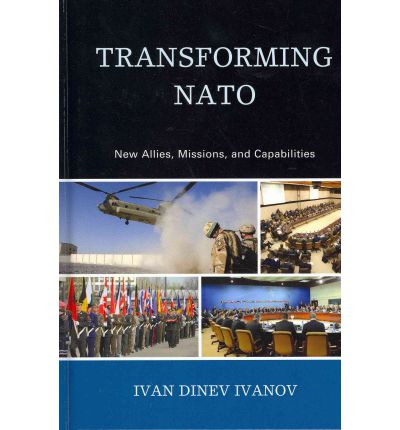Transforming NATO: New Allies, Missions, and Capabilities
Ivan Dinev IVANOV
Disponibilité: En rupture de stock - disponible sous 15 jours
- Catégories: NATO
- Editeur: LEXINGTON BOOKS
- ISBN: 9780739137147
- Date de publication: 01/06/2011
- Reliure: Paperback
- Nombre de pages: 280
Résumé
Transforming NATO: New Allies, Missions, and Capabilities, by Ivan Dinev Ivanov, examines the three dimensions of NATO's transformation since the end of the Cold War: the addition of a dozen new allies; the undertaking of new missions such as peacekeeping, crisis response, and stabilization; and the development of new capabilities to implement these missions. The book explains these processes through two mutually reinforcing frameworks: club goods theory and the concept of complementarities. NATO can be viewed as a diverse, heterogeneous club of nations providing collective defense to its members, who, in turn, combine their military resources in a way that enables them to optimize the Alliance's capabilities needed for overseas operations.
Transforming NATO makes a number of theoretical contributions. First, it offers new insights into understanding how heterogeneous clubs operate. Second, it introduces a novel concept, that of complementarities. Finally, it re-evaluates the relevance of club goods theory as a framework for studying contemporary international security. These conceptual foundations apply to areas well beyond NATO. They provide useful insights into understanding the operation of transatlantic relations, alliance politics, and a broader set of international coalitions and partnerships.
Table des matières
Preface
Abbreviations
Introduction
Chapter 1. Management and Sustainability of Clubs: Conceptual Foundations of NATO Politics
Chapter 2. Explaining NATO's Transformation: the Concept of Complementarities
Chapter 3. Expanding the Mission: NATO's Out of the Area Involvement
Chapter 4. Advancing NATO's New Capabilities
Chapter 5. Adding New Allies: Three Rounds of Post-Cold War NATO Expansion
Chapter 6: Managing Twenty-First Century Operations: NATO's Involvement in Afghanistan
Conclusions
Appendix: Assessing the Effect of Complementarities
Bibliography
Index
